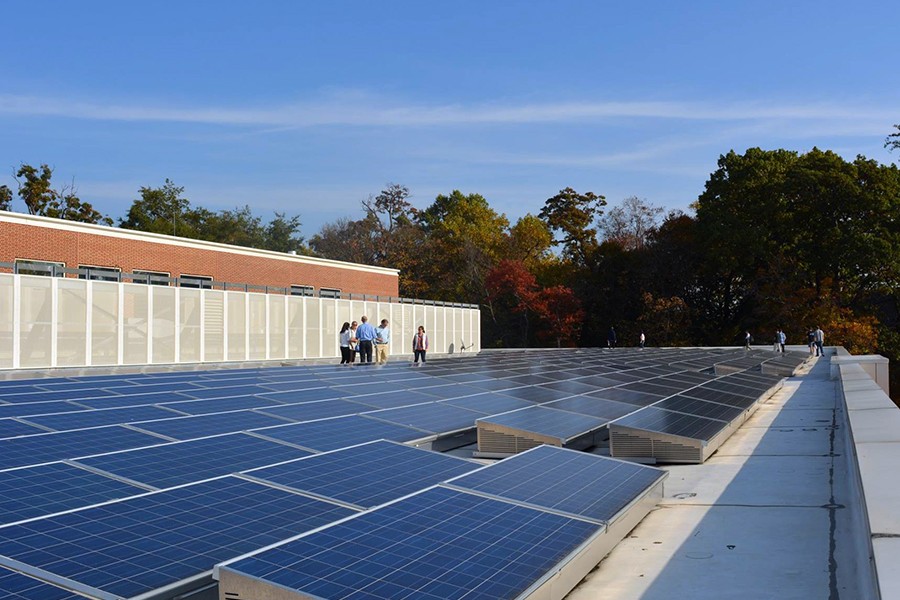More than a decade ago, Johns Hopkins made a commitment to reduce its greenhouse gas emissions by 51 percent by 2025.
Since making that promise, the institution has grown by 11 percent. That's roughly 1.3 million additional square feet to power—about half the square footage of the Empire State Building.
So how does a growing enterprise like Johns Hopkins maintain its commitment to reducing its carbon footprint, while still increasing its operations?
The answer, it seems, is in fostering deep commitments to sustainability that encompass all aspects of the institution, including eco-friendly building designs, energy-efficient plant operations, and even creating changes in human activity that can reduce waste.
A new report released today benchmarks the progress Johns Hopkins has made toward its goal and highlights some of the innovative methods the institution has implemented to reach it. The report reflects activities through fiscal year 2016, which ended on June 30, 2016.
"While total energy consumption has increased since our baseline year, we are getting more efficient per square foot," says Bob McLean, vice president for real estate and facilities at Johns Hopkins University. "Consumption has decreased since last fiscal year, and total emissions are down thanks to conservation, efficiency gains, and improvements in our regional grid."
Since determining a baseline measure of greenhouse gas emissions in 2008, Johns Hopkins has already achieved a 35 percent reduction through energy conservation strategies. The report details some of these strategies and successes, including:
The Undergraduate Teaching Labs building—designed to use 40% less energy than a similar facility—received a LEED platinum rating in 2016, the highest certification awarded by the U.S. Green Building Council for energy-efficient building design. The UTL utilizes high-efficiency heating and cooling systems, occupancy sensors that control lights and HVAC, daylight sensors, low-flow water fixtures, and lab technologies designed to conserve energy and water.
The Bloomberg School of Public Health decreased greenhouse gas emissions by 29 percent—the equivalent to the carbon captured by a forest 10 times the size of Central Park. The school also cut its domestic water consumption almost in half compared to its all-time high in 2010.
345 MWh of electricity was generated from solar panels at the Keswick and Mount Washington campuses.
On the Homewood campus, 66 percent of the events held in fiscal year 2016 campus were zero-waste events. More than 1,000 pieces of furniture were repurposed and diverted from landfills through the Furniture Reuse Program, and since 2013, a Hopkins Eco-Smart Move-out Program has captured donations to give back to the community.
The Peabody Institute reduced its paper usage by 17.5 percent by making course catalogs available online and printed copies available by request only, securing them a "Green Blue Jay Award" this past Earth Week.
For the second year, the university's Idea Lab included a sustainability challenge to help improve operational or cultural sustainability, energizing the campus community to be creative and thoughtful about new projects or programs to advance action on the ground.
The School of Medicine was among three organizations to receive the Sustainability Partnership Game Changer Award from the National Waste and Recycling Association.
Campus Housing and Dining sourced 25 percent real food—defined as local- or community-based, fair, ecologically sound, and/or humane—for the eateries on Homewood campus.
"To meet our goal of a 51 percent reduction, we must make strides while we consider the impacts of new construction and expansion," said Ashley Pennington, the sustainability manager for Johns Hopkins University. "This report signals steady progress, and highlights the need for continued action through integration, innovation, and investment in our facilities, operations, and decision-making processes to 2025 and beyond."
Posted in University News, News+Info
Tagged sustainability, office of sustainability, recycling, renewable energy











